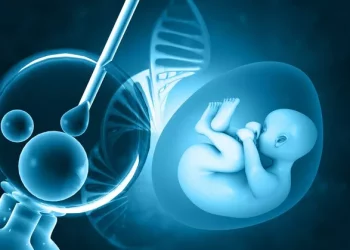Subfertility is a condition characterized by a prolonged time to conceive compared to the general population. It is distinct from infertility, where a couple is unable to conceive after one year of regular, unprotected intercourse. Subfertility suggests that conception is possible but may take longer than usual. This distinction is crucial because it frames subfertility as a condition that may resolve naturally over time, whereas infertility often requires medical intervention.
Subfertility is a common issue affecting many women. Research indicates that approximately 10-15% of couples experience subfertility, with female factors contributing in about half of these cases. Understanding the underlying causes of subfertility in women can help guide appropriate interventions and support couples in their journey to parenthood.
Causes of Subfertility in Females
Ovulation Problems
Polycystic Ovary Syndrome (PCOS)
PCOS is a prevalent endocrine disorder affecting 6-12% of women of reproductive age. It is characterized by chronic anovulation (lack of ovulation), hyperandrogenism (excess male hormones), and polycystic ovaries visible on ultrasound. The hormonal imbalance in PCOS disrupts the normal menstrual cycle, leading to irregular or absent periods and difficulties in ovulation. This significantly impacts a woman’s ability to conceive naturally.
Diminished Ovarian Reserve (DOR)
DOR refers to a reduction in the quantity and quality of a woman’s remaining eggs. This condition can occur naturally with age but can also result from medical treatments like chemotherapy, surgery, or conditions such as endometriosis. Women with DOR may experience irregular cycles and reduced fertility potential due to fewer available eggs and compromised egg quality.
Hormonal Imbalances
Various hormonal imbalances can affect ovulation, including thyroid disorders (hyperthyroidism or hypothyroidism), hyperprolactinemia (elevated prolactin levels), and adrenal gland disorders. These conditions disrupt the hormonal signals necessary for regular ovulation, thereby hindering conception.
Cervical Factor
Cervical mucus plays a vital role in facilitating the transport of sperm through the female reproductive tract. Abnormalities in cervical mucus, whether due to infections, hormonal imbalances, or other factors, can hinder sperm motility and prevent successful fertilization. Conditions like chronic cervicitis (inflammation of the cervix) can alter the quality and quantity of cervical mucus, creating a less hospitable environment for sperm.
Uterine Factors
Fibroids
Fibroids are benign tumors that grow within the muscular wall of the uterus. Depending on their size and location, fibroids can interfere with implantation or block the passage of sperm and embryos. Submucosal fibroids, in particular, distort the uterine cavity and are most likely to impact fertility.
Polyps
Uterine polyps are growths that extend from the inner lining of the uterus. These benign growths can cause irregular menstrual bleeding and may create an inhospitable environment for implantation. Larger polyps or those located near the fallopian tube openings can obstruct the passage of sperm or embryos, thereby affecting conception.
Endometriosis
Endometriosis is a chronic condition where tissue similar to the lining of the uterus grows outside the uterine cavity. This ectopic endometrial tissue can cause inflammation, scarring, and adhesions within the pelvic cavity. Endometriosis is associated with pelvic pain and can significantly impact fertility by affecting the function of the ovaries, fallopian tubes, and uterus. The inflammatory environment and anatomical distortions caused by endometriosis can hinder implantation and embryo development.
See also: Rates and Causes of Infertility in Women
Other Factors
Age
Age is a critical factor in female fertility. As women age, the quantity and quality of their eggs decline. This natural decline in ovarian reserve becomes more pronounced after the age of 35, leading to decreased fertility and an increased risk of miscarriage.
Weight
Both underweight and overweight women can experience subfertility due to hormonal imbalances. Excess body fat can lead to elevated estrogen levels, while insufficient body fat can disrupt the production of hormones necessary for ovulation. Achieving and maintaining a healthy weight through diet and exercise can help regulate menstrual cycles and improve fertility.
Undiagnosed Medical Conditions
Chronic medical conditions such as diabetes, autoimmune diseases, and infections can impact fertility. Conditions like celiac disease, which often goes undiagnosed, can lead to subfertility if not managed properly. Undiagnosed sexually transmitted infections (STIs) can also cause scarring and blockages in the reproductive tract, leading to subfertility.
Diagnosis of Subfertility
For couples experiencing difficulty conceiving, it is recommended to seek medical evaluation after one year of regular, unprotected intercourse (or after six months if the woman is over 35). Early evaluation can identify underlying issues and guide appropriate interventions.
Common Diagnostic Tests
Ovulation Tracking
Ovulation tracking involves monitoring the menstrual cycle to determine if and when ovulation occurs. Methods include tracking basal body temperature, using ovulation predictor kits (OPKs), and monitoring changes in cervical mucus. These methods help assess whether ovulation is occurring regularly and predict the most fertile days of the cycle.
Blood Tests
Blood tests can measure hormone levels, including follicle-stimulating hormone (FSH), luteinizing hormone (LH), thyroid hormones, prolactin, and anti-Müllerian hormone (AMH). These tests provide insights into ovarian reserve, thyroid function, and other hormonal factors affecting fertility.
Imaging Studies
Imaging studies such as transvaginal ultrasound, hysterosalpingography (HSG), and magnetic resonance imaging (MRI) can evaluate the structure of the reproductive organs. Ultrasound can detect ovarian cysts, fibroids, and polyps, while HSG assesses the patency of the fallopian tubes. MRI can provide detailed images of the pelvic anatomy, helping to identify conditions like endometriosis.
Treatment Options for Subfertility
Lifestyle Modifications
Adopting a healthy lifestyle can improve fertility outcomes. Maintaining a healthy weight through balanced nutrition and regular exercise is crucial. Reducing stress through relaxation techniques, adequate sleep, and support from family and friends can also positively impact fertility. Avoiding smoking, excessive alcohol consumption, and recreational drug use is essential for reproductive health.
See also: PCOS and Infertility Statistics
Medications
Medications can help stimulate ovulation in women with ovulatory disorders. Clomiphene citrate, letrozole, and gonadotropins are commonly used to induce ovulation. These medications work by promoting the development and release of eggs from the ovaries, increasing the chances of conception.
Intrauterine Insemination (IUI)
IUI is a fertility treatment that involves placing sperm directly into the uterus around the time of ovulation. This procedure increases the number of sperm that reach the fallopian tubes, enhancing the likelihood of fertilization. IUI is often used in conjunction with ovulation-stimulating medications to maximize the chances of success.
Conclusion
Subfertility in females is a common condition that can result from various factors, including ovulation problems, cervical and uterine issues, endometriosis, and other medical conditions. Early diagnosis and appropriate treatment can significantly improve the chances of conception. While the journey may be challenging, many couples experiencing subfertility eventually achieve successful pregnancies with the right support and medical interventions.
It is essential for couples facing subfertility to seek professional guidance from healthcare providers. Personalized advice and treatment plans can address specific issues and enhance fertility outcomes. With advances in reproductive medicine and a proactive approach to fertility health, there is hope for couples striving to conceive.
Related Topics:
Emergency Guide: Do Uterine Fibroids Affect Fertility?
Fertility Medications for Women: A Comprehensive Tutorial
Endometriosis and Infertility: The Connection You Need to Know



























